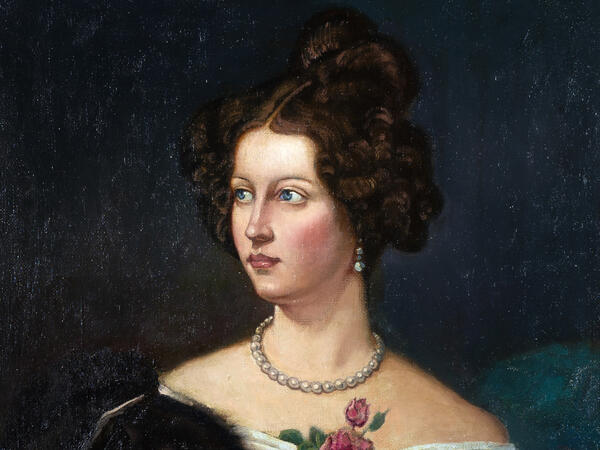The painting depicts Baroness Amalie von Krüdener, a famous beauty of the 19th century, with whom the young Fyodor Tyutchev fell in love with and to whom he later dedicated his poetry. They met in Munich, where he served as secretary of the Russian embassy for over fifteen years. Amalie impressed the future famous poet with her refined beauty, education and charm. Soon they fell deeply in love — their feelings were mutual.
In the fall of 1824, Tyutchev proposed to Amalie, and the countess agreed, but they were not meant to get married. The problem was that Amalie came from an old and rich family, and Tyutchev was a young freelance employee of the diplomatic mission and, moreover, who had neither the title nor the wealth. In the eyes of Amalie’s relatives, the young poet was the most improper match. Tyutchev was rejected. The poet was devastated. In 1836 Tyutchev wrote a poem “I remember a golden time…”, in which he described the time of his love. Literary scholars believe that this poem is dedicated to Amalie:
In the fall of 1824, Tyutchev proposed to Amalie, and the countess agreed, but they were not meant to get married. The problem was that Amalie came from an old and rich family, and Tyutchev was a young freelance employee of the diplomatic mission and, moreover, who had neither the title nor the wealth. In the eyes of Amalie’s relatives, the young poet was the most improper match. Tyutchev was rejected. The poet was devastated. In 1836 Tyutchev wrote a poem “I remember a golden time…”, in which he described the time of his love. Literary scholars believe that this poem is dedicated to Amalie:



